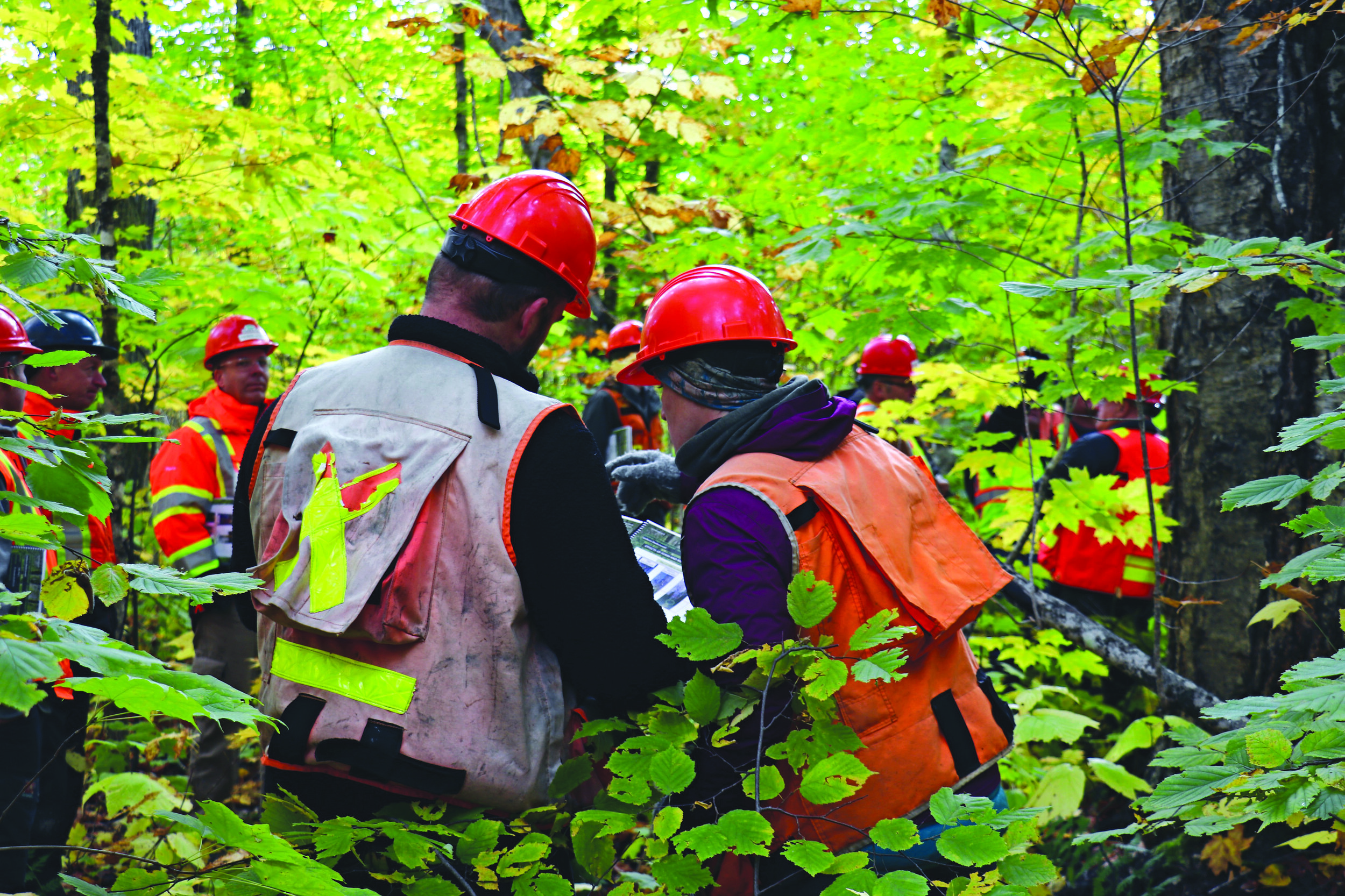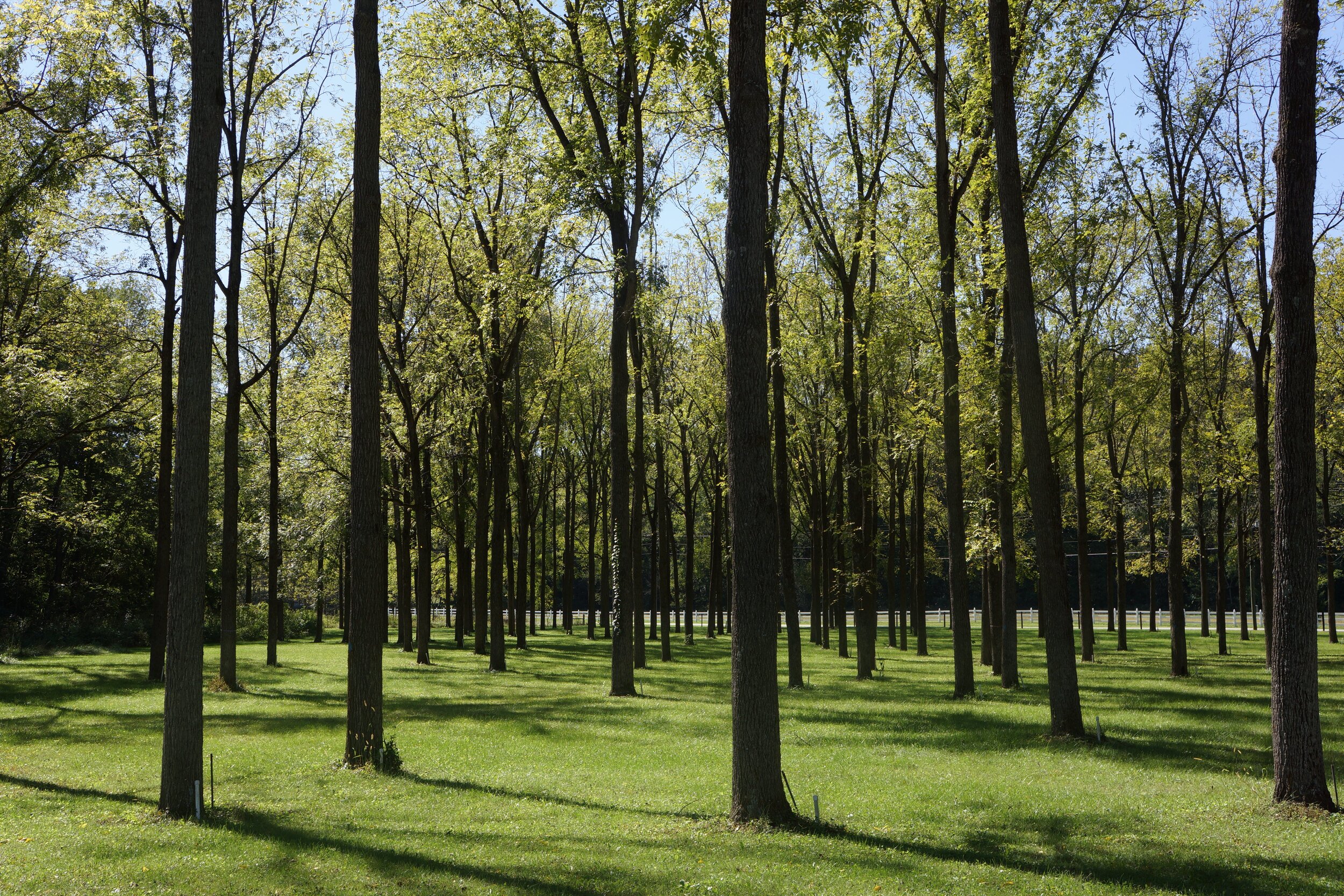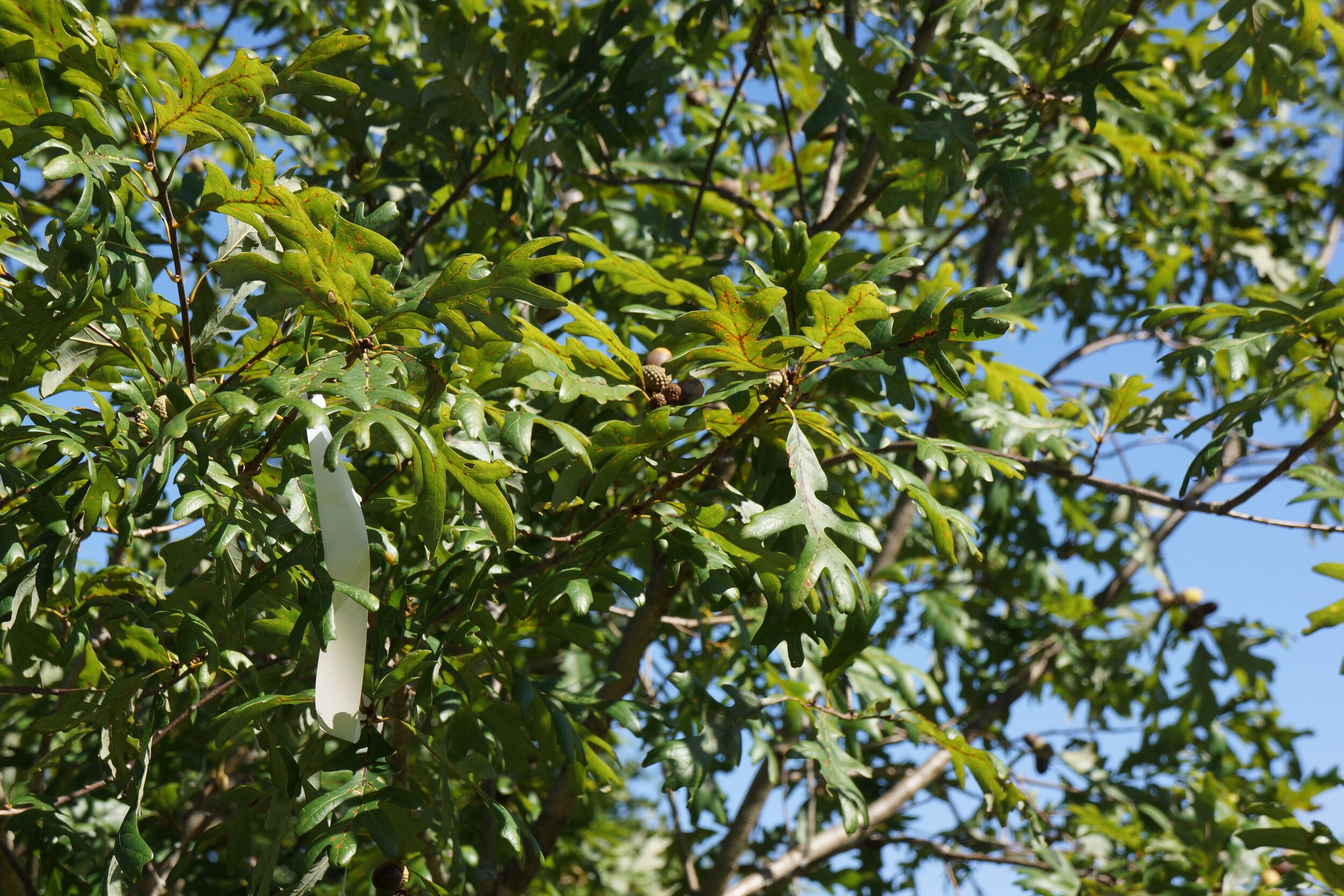The time for adaptive management has come
What can we do now to ensure our forests thrive in a changing climate?
by Gaetan Pelletier and Joey Volpé
The climate has always changed, but the changes that we are seeing today are largely driven by human activity. We are experiencing increases in temperature, changes in precipitation levels, changes in drought periods, and also changes in the frequency and duration of extreme weather events. Although climatologists predict the weather will be warmer and wetter on average, it’s more complicated than that. We can witness periods of heavy precipitation, and periods of drought, for example.
The difficulty in dealing with climate change is the degree of resolution we need to make changes. Forest managers want to know how many days of drought there will be, how many additional growing-degree days, and how many freeze-thaw days. These are all critical for tree production. These factors impact vegetative communities, and the incidence of wildfire, disease, insect infestation, invasive species, etc. (It is already projected that some forest pests will migrate northwards because of higher wintertime temperatures.)
According to the International Panel on Climate Change, under the more likely business-as-usual scenario, where humanity continues to emit greenhouse gases at the current rate, we can expect a one-degree C increase in average annual temperature per decade. By the end of this century, we could be experiencing a climate like that of Virginia today. Great news! We can contact the tree nurseries down there, order Black cherry, Black walnut, and Loblolly pine, and we’re all set, right? Absolutely not – at least, not yet; the late spring frost would likely kill the new recruits.
It is certain, however, that we will witness a number of impacts – both in the forest itself, and in the forestry sector – resulting from climate change. A case in point is spruce, the backbone of the industry today. According to Dr. Jean-Martin Lussier, a silviculture and forest productivity researcher at NRCan’s Canadian Wood Fibre Centre, it will likely be more difficult to produce spruce.
If the drought issues aren’t so bad – if we have more heat and adequate water levels – we may have an interesting opportunity. In the very short term, it is conceivable that forest productivity could increase. But there are unanswered questions about what types of management will allow our industries and our biodiversity and our forest-dependent communities to adapt. Climate change could be beneficial up to a certain point – for some species, in some stands – but the trajectory is not linear.
For most tree species, there might be a period of opportunities followed by a period of threat, as average temperatures keep increasing. If we adapt right away, and improve our practices, we may be able to minimize the negative impacts on our forests and on our society. The call for action is now, and the framework to use is adaptive silviculture and forest management.
READJUST TARGETS
The main obstacle to adaptation is that humans are inclined to preserve what we have; we get comfortable with the status quo. The first step is to recognize that changes are happening, and that it is imperative to make adjustments. The recommended approach is adaptive management. In the face of an uncertain future, it is necessary to act with the knowledge we have, measure the outcomes, and readjust our targets frequently. This approach also calls for revisiting the products we currently generate, and determining whether shifts are required in the short term, the mid-term, and the long term.
Adaptive management involves four basic steps. First, using the best available knowledge, decide on the change that is needed to mitigate negative effects that threaten your management objectives. Secondly, implement the strategy, and decide on the performance indicators to be used in evaluating the results. Third, measure attainment towards the objectives, and evaluate effectiveness. Finally, adjust accordingly and re-start the process.
Adaptation measures in our forests must be undertaken at the local scale. Province-wide predictions of change are rarely useful for practitioners. For example, increases in temperature and periods of drought can be beneficial on sites that are currently wet, but detrimental on exposed sites with coarse-textured soils.
When it comes to adapting our forest management to reduce the negative impacts of climate change, we can consider four main approaches or pathways – apart from the “do nothing” scenario. The first option is a rather passive approach, consisting of gradually shifting our focus from the current commercial species, and – through iterations and many cycles – favouring species that adjust best to the new conditions. The second option is to improve our forests’ resistance to negative impacts. The third alternative is to improve our forests’ resilience, with respect to current and future changes. The final option consists of facilitating the transition of our forests to a new state.
1) Passive adaptation
Passive adaptation – letting nature dictate what species assemblage results from the effects of a changing climate – demands fewer resources than the other approaches, and is less prone to failure. However, this is the strategy that may impact our current society the most. Species such as hemlock and pines will likely encroach on the niche currently occupied by fir and spruce. As for our hardwood species, Sugar maple and Yellow birch will be the clear losers, making way for species such as American beech and Red maple. These replacement species, although more resilient, are far less interesting economically, which means our current industrial infrastructure will not be sustainable.
2) Increase resistance to stress
Healthy and vigorous trees with good growth rates will withstand cumulative stress better than those already competing for resources. If we want to improve resistance to drought, the simplest method is to thin at different times in the lifecycle of the stand, reducing competition for key resources. Crowns develop more fully, enabling the tree to more effectively transform CO2 into carbon through photosynthesis. Having fewer trees on one micro-site also reduces competition for water. Thinned stands will also reach economic maturity sooner, allowing for subsequent adaptation silviculture earlier in the rotation, to further reduce risk. This practice is well suited to most tree species.
3) Promote resilient stands
Resilience is the capacity of an ecosystem to return to its initial state after being disturbed. For example, we can make a forest resilient to Spruce budworm outbreaks by promoting healthy cohorts of softwood and mixed species. The insect primarily attacks mature trees, thus allowing the existing regeneration to grow back more quickly. The forest will therefore return to its mature state more quickly than without the younger cohort. We can implement this approach by adopting silviculture regimes that encourage regeneration – such as shelterwood systems, irregular shelterwood systems, and uneven-aged management.
4) Active transition
The fourth option – the most radical, costly, and risky – is to transition the forest to a state that is much less prone to the negative impacts of climate change. What we are talking about here is “assisted migration” – introducing new species that are better adapted to the new conditions. It requires the knowledge of what tree species, or different genotypes of those species, we should be moving northward to somewhat warmer climates. This approach is best suited where artificial regeneration is common practice, and where strong genetics research programs are in place. It is less useful where regeneration is mainly assured through partial harvesting, to promote offspring of the trees already on site.
It is undeniable that our climate is changing, and that this will affect the way we grow and manage our forests. Adaptive management offers a good framework for getting us started right away. As knowledge improves, society will have to accept changes in the types of forests we grow, and in the types of wood products we generate for consumption.
(Gaetan Pelletier and Joey Volpé are, respectively, director and manager of knowledge mobilization at the Northern Hardwoods Research Institute in Edmundston, N.B. This article was inspired by discussions and interviews with Jean-Martin Lussier and Anthony Taylor, of Natural Resources Canada; Tom Beckley, Charles Bourque, and Loïc D’Orangeville, of UNB; and Chris Hennigar and Chris Norfolk, at the New Brunswick Department of Energy and Resource Development.)





















